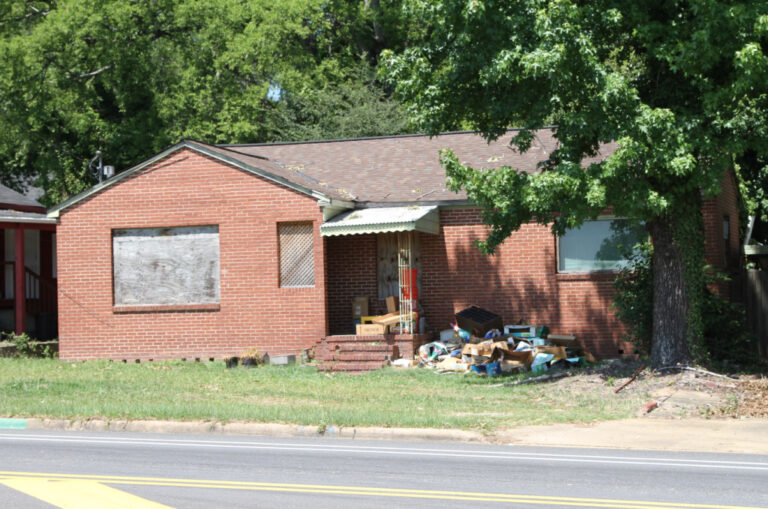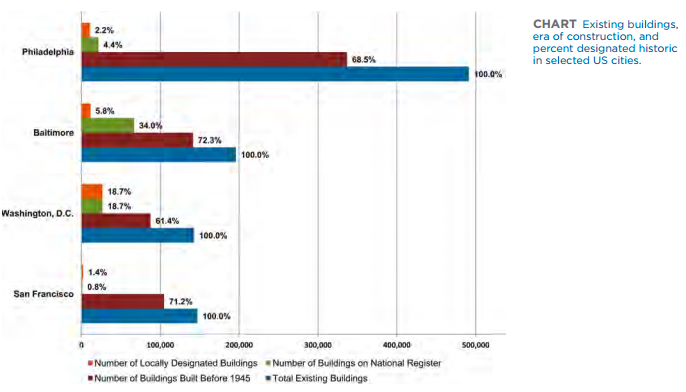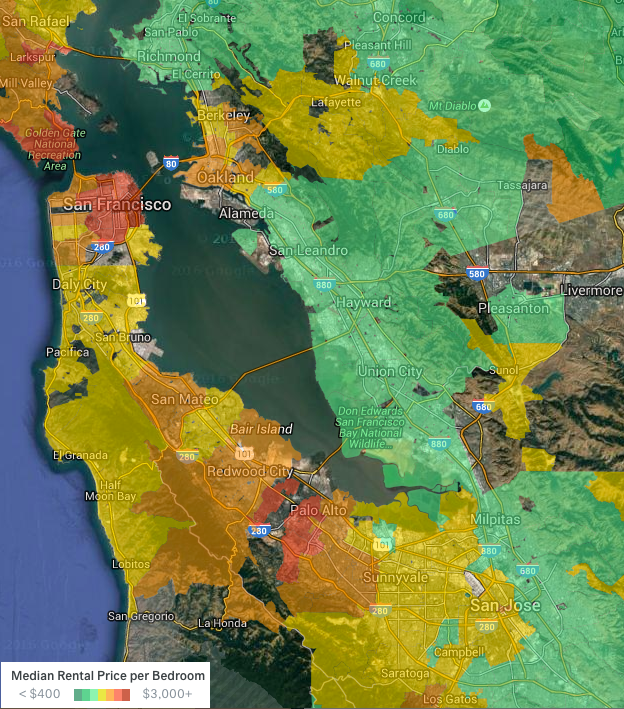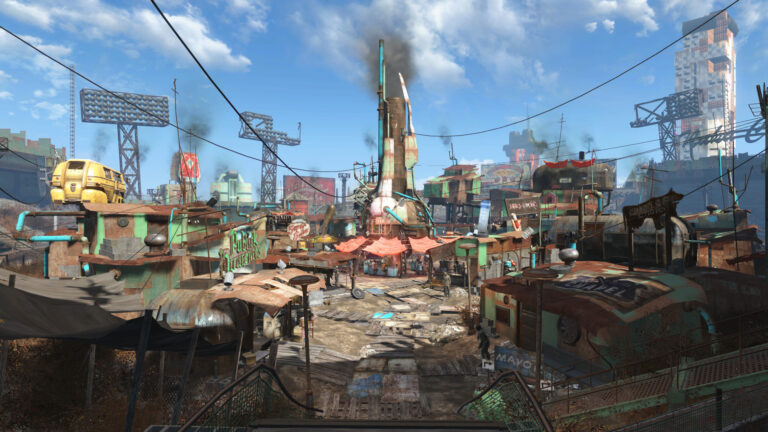Physical Address
304 North Cardinal St.
Dorchester Center, MA 02124
Physical Address
304 North Cardinal St.
Dorchester Center, MA 02124

I keep up with the reports and journalists proclaiming that America’s suburbs are thriving and will continue to do so forever. Yet I keep scratching my head since these depictions are in conflict with what I keep seeing on the ground as I travel around the country. The folks who declare the permanent triumph of suburbia must live in the prosperous enclaves near the lake and golf course, not the poorly aging subdivisions that are rapidly losing value and becoming reservoirs for the downwardly mobile former middle class. There’s absolutely nothing wrong with any of these homes, but here they are boarded up as the entire neighborhood slowly slides into decline. If the 1950’s subdivisions are looking dogeared you should check out the older neighborhoods from the early twentieth century. They’ve been neglected even longer and the collective deferred maintenance shows. I checked the real estate listings in this Georgia town and many of these homes can be bought for as little as $20,000. The average price seems to be closer to $40,000 or $50,000. Here’s one of the problems. This town has enjoyed a suburban building boom for the last few decades. These new homes are part of one of the better new communities being built on the far edge of town. These are desirable places to live and people who can afford to move here do so. Homes here are offered for between $350,000 and $500,000. But this region has a steady population. The number of people in the area has been increasing very slowly even as the number of new homes and commercial buildings continues to ramp up at a heady pace. There’s a direct connection between the impoverishment of the empty homes in the older parts of town and these new developments way out on the […]

Historic preservation rules are part of the regulatory framework of most major American cities. But the historic districts in which they are generally applied get little inquiry from economists, meaning little is known about their nationwide scope and economic impact. And even between municipalities they can vary, depending on the precedents set by different circuit courts. Now the Cato Institute, a libertarian Washington think tank, is filing a brief that aims to bring consistency to these laws nationwide. In a 2014 study by the National Bureau of Economic Research, a group of urban economists led by Ed Glaeser found that historic districts in New York City experienced less construction, and affected where in the city developers build. More importantly, the economists found that preservation laws were costliest in neighborhoods where redevelopment would have been most valuable. Another paper, published in 2016 by NYU, to mark the 50th anniversary of New York City’s preservation laws, explored the relationships between historic districts and the type of buildings built, the type of buildings preserved, demographics of the residents in historic districts, and more. The evidence presented in both studies suggests that historic districts do indeed alter the human geography of cities. It validates William Fischel’s observation that “historic districts thus operate as another example of the double-veto system that state land use regulations add to municipal regulation except that in this case the potential veto arrives prior to municipal review rather than afterward” (Zoning Rules!, Page 62). In Nectow v City of Cambridge, the Supreme Court held that Massachusetts violated due process by “arbitrarily and unreasonabl[y]” imposing restrictions on certain land, in a way that did nothing to protect the public (which was the original rationale for land use regulations under the earlier Supreme Court case Euclid v Ambler). That said, the rules about which historic […]

1. This week at Market Urbanism, we’re Liberalizing Cities From The Bottom Up Middle Aged NIMBYs, Young YIMBYs by Michael Lewyn Most of the Pro-Urb posters on housing costs assume that high rents are the result of insatiable demand driven by wealthy foreigners, that government lets developers do as they please, and that housing supply is pretty much irrelevant. Why The Tech Industry Should Care About Housing by Jeff Fong Our broken housing system is silently depriving us of future contributors who could build great things; and for each individual who’s preemptively priced out, we’ll never know what those things might have been. Is Commercialism Making Cities Less Livable? by Shanu Athiparambath Are these people correct? If they were, the world’s most commercial cities would be the least livable. But anyone with a modicum of education or travel experience knows this is not true. The cities with the most economic freedom, commercial enterprise and prosperity–think Hong Kong, Singapore, London, Sydney and Vancouver–also have the highest living standards. 2. Where’s Scott? Scott Beyer will spend his last day in Dallas tomorrow visiting the downtown location of the recent sniper attacks. The rest of his weekend will be in Fort Worth, and the rest of July in Austin, stop #7 on his 30-city writing tour. 3. At the Market Urbanism Facebook Group: Brent Gaisford wants to get together with fellow Los Angelenos “if you want to get more involved in the fight for affordable, urbanist housing in LA“ Sandy Ikeda is surprised by an update on China‘s largest “ghost city” Cato Institute filed a brief urging the Supreme Court to take up a case that would restrict historical districting via takings law. Nick Zaiac and Randal John Meyer were involved in the research Shanu Athiparambath wrote Why Building In India Is A Challenge and These Income Segments […]
Commercialism is blamed for most of the evils that plague society, inside and out of India. In the Indian city of Coimbatore, roads have become narrower and traffic more intense. There is not enough space for pedestrians. Many residents blame the city’s rising level of commercialization. Are these people correct? If they were, the world’s most commercial cities would be the least livable. But anyone with a modicum of education or travel experience knows this is not true. The cities with the most economic freedom, commercial enterprise and prosperity–think Hong Kong, Singapore, London, Sydney and Vancouver–also have the highest living standards. Similar studies show that the cities with the lowest living standards, meanwhile, are in countries that are developing, or that are suffering under repressive, anti-capitalist regimes (think Caracas, Venezuela, the world’s most dangerous city). Nevertheless, it is clear that the most commercialized Indian cities have become less livable in some important ways, such as by suffering from more congestion. So, what is going on? It is true that people migrate to cities with more commercial enterprise. It may seem that such “crowding” is unpleasant. But people are migrating to these cities precisely because there are more shops, hospitals, schools, leisure spaces and other amenities. The fact that there is already a heavy concentration of people in these cities is an important factor also, since that means there are more potential employers and business associates. Alas, the existence of people somewhere lures yet more people. Indeed, it is hard to think of a neighborhood where real estate prices have significantly fallen because of population growth. Such neighborhoods may have become more crowded…but that does not mean they are less livable. Moreover, vast population growth and crowding are not the same. Population density is defined as the number of people living on […]

[Editor’s note–this is the inaugural article for a new blog that Jeff launched called Tech For Housing, where tech workers advocate for more housing in the Bay Area.] San Francisco–For decades, every city in the Bay Area has restricted housing production. And for decades, the Bay Area has gone deeper into housing debt. People and money continue streaming into the region, cities rarely allow new housing, and prices continue to rise. This hurts every industry in the Bay Area, and tech is no exception. The housing market steals money straight out of our pockets and, if we stay the current course, will rob us of the better version of ourselves we need more time to become. How Housing Robs Us Blind Housing in San Francisco costs 73% more than in Austin, 53% more than in Seattle, and 36% more than in Los Angeles. And figures for many of the Peninsula Cities are even worse. After accounting for cost of living, our real incomes in Bay Area tech are often lower than those of our colleagues in less expensive locales simply by virtue of housing costs. Obviously, this is bad for us as employees, but it hurts founders and investors as well. The higher housing prices climb, the more founders have to pay employees to provide for the same standard of living. And the higher labor costs become, the more money founders have to raise from investors, meaning more capital gets tied up funding the same amount of work. All this adds up to tech, as an industry, paying more and more to stay in the Bay Area for zero added benefit. Median Rental Price per Bedroom Source: Trulia But there’s more at stake than just burn rates and take-home pay. As it stands, housing prices are a millstone around our […]
Today, CNU Nextgen, a group of younger members of the Congress for New Urbanism, retweeted a New York Times story about the evils of NIMBYism in Boulder. Why did I find this noteworthy? Because on the Pro-Urb listserv, dominated by middle-aged CNUers, a very different conventional wisdom prevails. Most of the Pro-Urb posters on housing costs assume that high rents are the result of insatiable demand driven by wealthy foreigners, that government lets developers do as they please, and that housing supply is pretty much irrelevant.
1. This week at Market Urbanism Do The Rich Cause High Rents? by Michael Lewyn One common argument against building new housing is that new construction will never reduce housing costs, because the influx of ultra-rich people into high-cost cities creates an insatiable level of demand. ReasonTV on SF’s YIMBY Movement (a video by ReasonTV) Have you ever had the experience of trying to stuff a lot of stuff in the suitcase? Have you ever gone to a party and seen that the pizza is gone, but you still wanted some? It’s just running out. And they know that we have run out [of housing in San Francisco]. How Realistic Are The Cities Of Fallout? by Nolan Gray Sacred sites—whether in the form of a shrine or a megaton bomb—play an essential role in early human urbanization, both in Fallout 3 and the real world. As the historian Lewis Mumford points out in The City in History, the dead are the first humans to take up stationary residence. Y-Combinator, Tech, and “New Cities” by Adam Hengels A society where housing and the components of vibrant cities are abundant and affordable is a vision worth striving towards. As is a society where disputes are resolved speedily in a bottom-up fashion. In many ways, the technology sector is already on a path to make that happen – they just may not yet realize it yet. 2. Where’s Scott? Scott Beyer is in Dallas, and will spend this weekend visiting small west Texas cities like Wichita Falls, Lubbock and Abilene. This week he wrote 5 articles–one for Governing Magazine making the Case for Cities to Outsource Economic Development; and 4 for Forbes–The Explosive Northern Growth Of Metro Dallas…Boulder, CO: Another Desirable But Over-Regulated U.S. City…On Urban Housing Issue, Liberals And Conservatives Talk Past Each Other…and What Is A […]

Even by the bizarre standard set by other fandoms, the fandom surrounding the Fallout video game series is weird. Where your typical human would rather spend a Friday night doing strange things like “hang out with friends” and “go out,” your average Fallout fan is likely spending his or her night asking “Could super mutants exist?” or debating the ethical merits of Fallout 4’s factions. In the spirit of this tradition, we wanted to ask: how realistic are Fallout’s cities? It’s worth first asking, does the Fallout universe even have cities? On the one hand, what we call “cities” in Fallout are quite small. In terms of actual visible inhabitants, even the largest of the Fallout cities—the urban area of New Vegas—has fewer than 150 known residents. Other large communities like Megaton, Rivet City, and Diamond City have approximately 50 residents each. The settlements that dot Fallout 4’s Commonwealth all have maximum populations of 21. Even the earliest known cities—take for example, Jericho—had estimated populations ranging from 2,000 to 3,000 in 9,000 BCE. There are two possible responses to this: First, we could be generous and look at Fallout concept art. After all, what we see in the virtual world of Fallout may fall short of the game designers’ vision of each city. Renditions of Megaton, Diamond City, and Rivet City depict cities with populations likely in the hundreds. In the case of New Vegas, concept art depicts a large city potentially supporting thousands of residents. Each is still smaller than even the earliest cities, but they are hardly the villages we experience in the games. Second, we could set aside population as an issue altogether. In The Urban Revolution, archaeologist V. Gordon Childe sets out 10 general metrics for urban cities. We won’t go through them here, […]

Monday, Y-Combinator, an early-stage technology startup incubator, announced it will “study building new, better cities.” Some existing cities will get bigger and there’s important work being done by smart people to improve them. We also think it’s possible to do amazing things given a blank slate. Our goal is to design the best possible city given the constraints of existing laws. They are embarking on an undertaking of noble intentions, and I will explain why the technology sector needs to be at the forefront of thinking about cities. However, in the pursuit of designing “new” cities from a “blank slate” they have begun their quest with one fatally flawed premise, that wise technocrats can master-build entirely new cities catering to the infinitely diverse set of needs and desires of yet-to-be-identified citizens. Any visions of city-building must first humbly acknowledge that cities are an “emergent” phenomena. According to wikipedia, “emergence is a process whereby larger entities, patterns, and regularities arise through interactions among smaller or simpler entities that themselves do not exhibit such properties.” What makes cities vibrant are the “spontaneous order” which emerges among city dwellers as they pursue their individual desires. Cities are like the internet – networks, patterns, and interactions emerge not through design but from spontaneous order. Like no entity could conceivably understand or control the internet, no entity has the knowledge to anticipate the desires of millions of individual agents, and design a city accordingly. This is called the “knowledge problem.” According to economist Friedrich Hayek: If we can agree that the economic problem of society is mainly one of rapid adaptation to changes in the particular circumstances of time and place, it would seem to follow that the ultimate decisions must be left to the people who are familiar with these circumstances, who know directly of the […]
Last week, Reason.tv (the multimedia outlet of Reason Magazine) published a video about San Francisco’s YIMBY movement. The video describes the decades of underdevelopment in San Francisco as the result of community activism intended to limit the supply of new construction. As a result, San Francisco’s housing market is severely supply-constrained, and outrageously expensive. The problem has gotten so bad that pro-development, “YIMBY” organizations such as SFBARF and Grow San Francisco have sprung up to counter the anti-development forces. It’s great to see Reason taking notice of the YIMBY movement, and we’d love to see more attention paid to urbanism at libertarian sites. Three of us at Market Urbanism attended the first nationwide YIMBY conference in Boulder that the video mentions, and we’ll be sharing our thoughts on the conference soon. (h/t Jake Thomas at the Market Urbanism facebook group)